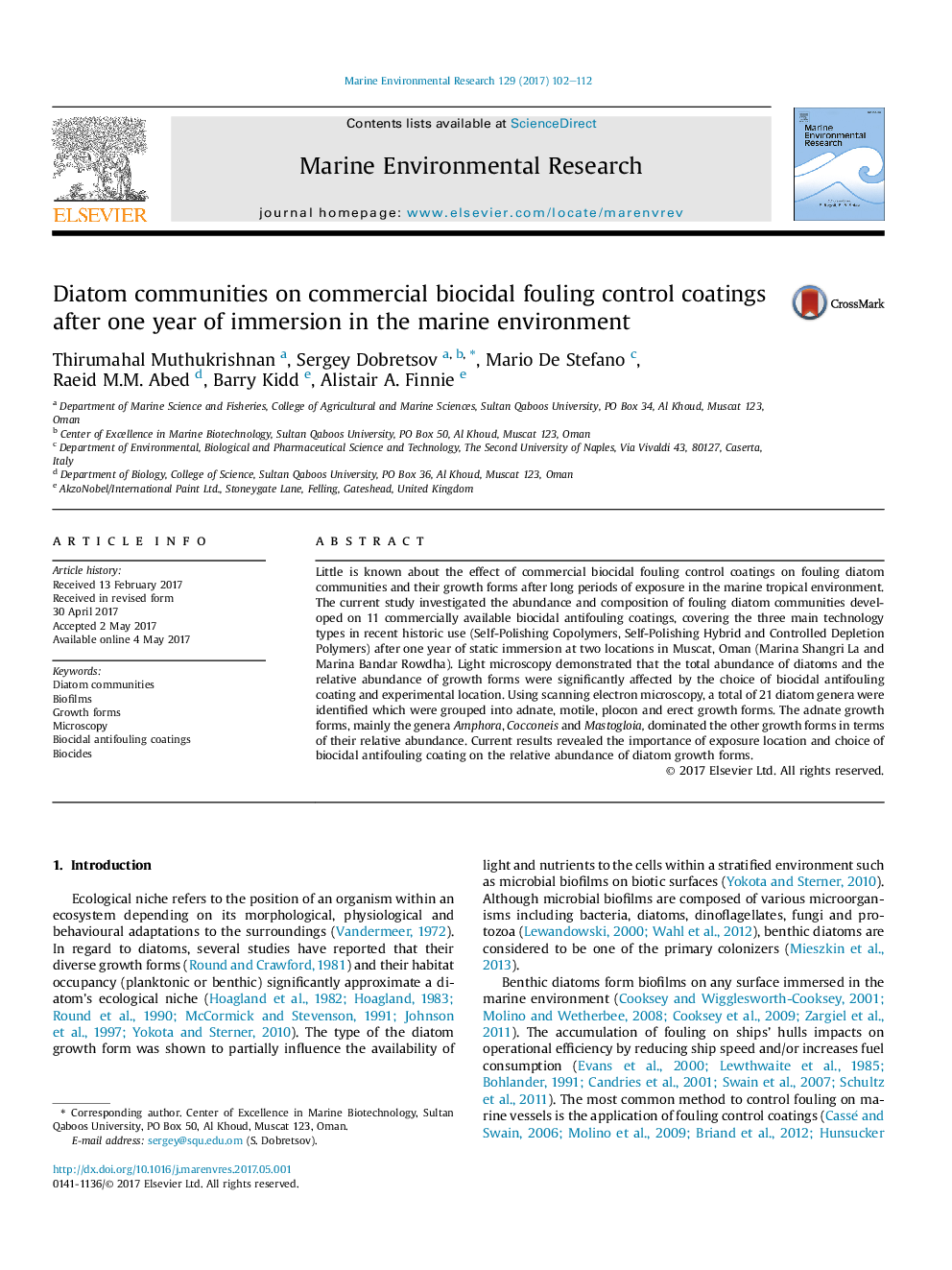| Article ID | Journal | Published Year | Pages | File Type |
|---|---|---|---|---|
| 5766195 | Marine Environmental Research | 2017 | 11 Pages |
â¢The total abundance of diatom fouling communities is influenced by the location of exposure and type of antifouling coating.â¢Four different diatom growth forms including 21 diatom genera were identified on commercial biocidal antifouling coatings.â¢The relative abundance of the diatom growth forms was found to be influenced by location and choice of antifouling coating.
Little is known about the effect of commercial biocidal fouling control coatings on fouling diatom communities and their growth forms after long periods of exposure in the marine tropical environment. The current study investigated the abundance and composition of fouling diatom communities developed on 11 commercially available biocidal antifouling coatings, covering the three main technology types in recent historic use (Self-Polishing Copolymers, Self-Polishing Hybrid and Controlled Depletion Polymers) after one year of static immersion at two locations in Muscat, Oman (Marina Shangri La and Marina Bandar Rowdha). Light microscopy demonstrated that the total abundance of diatoms and the relative abundance of growth forms were significantly affected by the choice of biocidal antifouling coating and experimental location. Using scanning electron microscopy, a total of 21 diatom genera were identified which were grouped into adnate, motile, plocon and erect growth forms. The adnate growth forms, mainly the genera Amphora, Cocconeis and Mastogloia, dominated the other growth forms in terms of their relative abundance. Current results revealed the importance of exposure location and choice of biocidal antifouling coating on the relative abundance of diatom growth forms.
